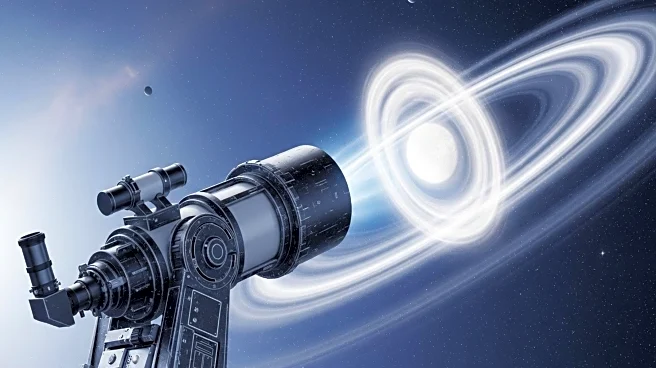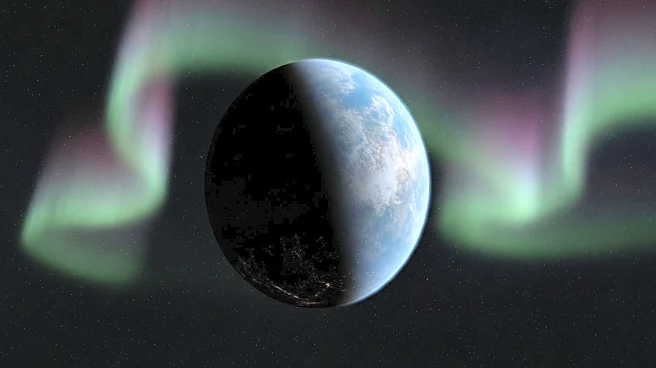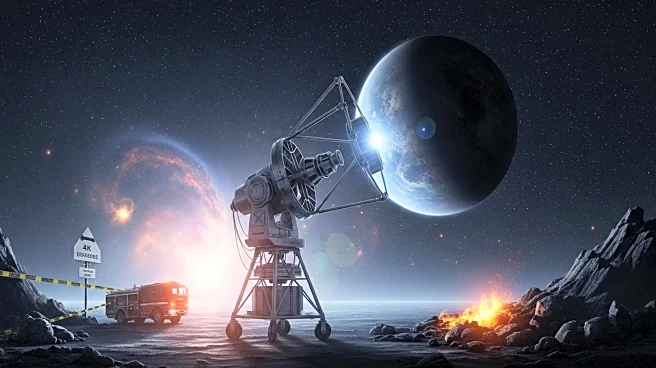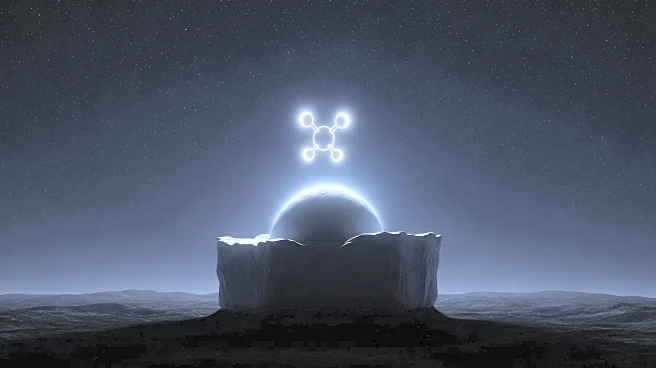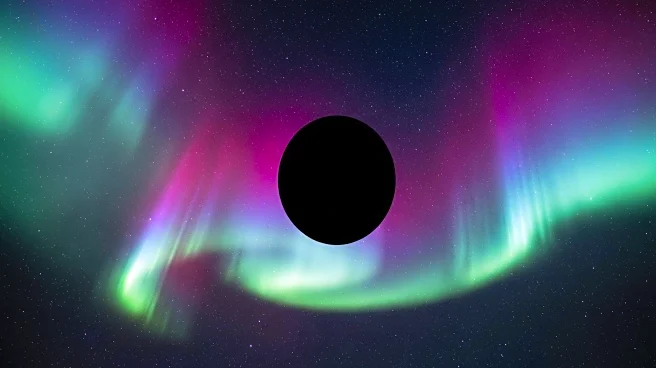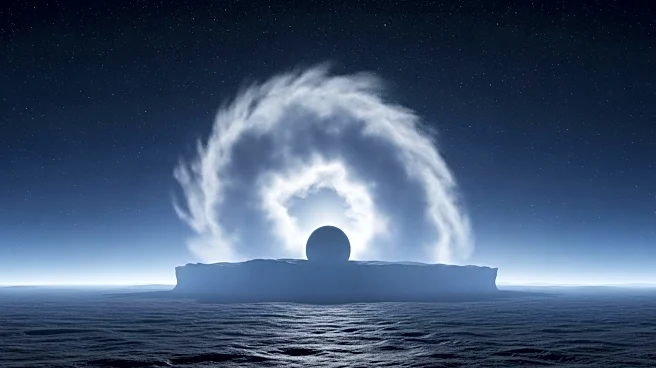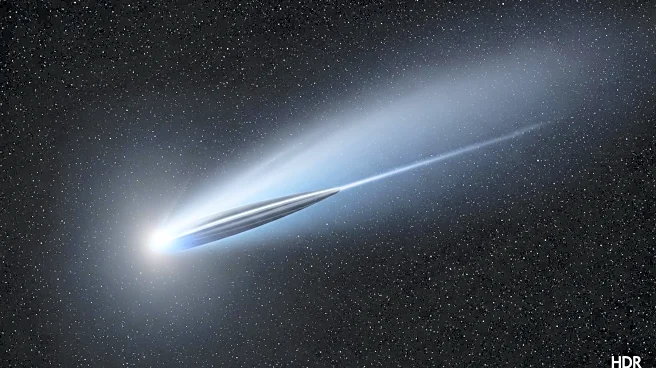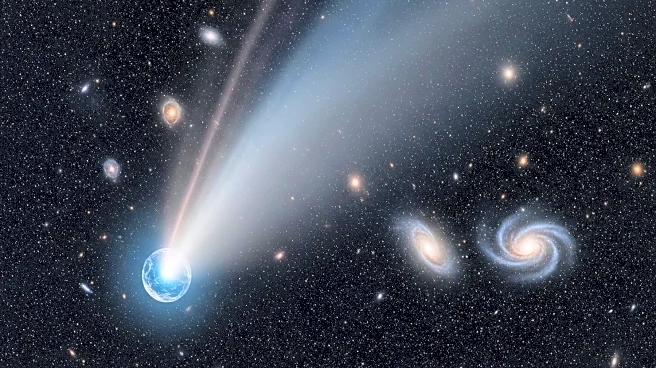What's Happening?
NASA's James Webb Space Telescope has made a groundbreaking discovery by providing the first direct measurements of a potential moon-forming disk around a large exoplanet named CT Cha b, located 625 light-years from Earth. This carbon-rich disk is considered a possible site for moon formation, although no moons have been detected yet. The exoplanet orbits a young star, only 2 million years old, and the circumplanetary disk is distinct from the larger accretion disk around the star. This discovery is significant as it offers insights into the formation of planets and moons, which is crucial for understanding the evolution of planetary systems across the galaxy. The findings were published in The Astrophysical Journal Letters.
Why It's Important?
The discovery of a moon-forming disk around CT Cha b is pivotal for the scientific community as it provides a rare opportunity to study the early stages of planet and moon formation. Understanding these processes is essential for comprehending the evolution of planetary systems, including our own solar system. The presence of carbon-rich molecules in the disk, such as acetylene and benzene, contrasts with the water-rich chemistry of the host star's disk, indicating rapid chemical evolution. This research could lead to a better understanding of the conditions necessary for moon formation and the potential for life-supporting environments on moons, which are believed to outnumber planets.
What's Next?
The research team plans to use the James Webb Space Telescope to conduct a comprehensive survey of similar objects to further understand the diversity of physical and chemical properties in disks around young planets. This ongoing research will help scientists explore the ingredients and processes involved in moon formation, providing a clearer picture of how moons and planets develop over time. The findings could also inform future studies on the potential habitability of moons in other planetary systems.

